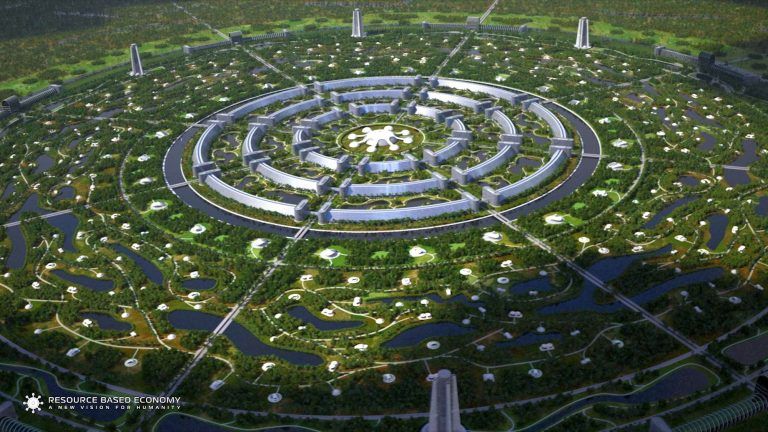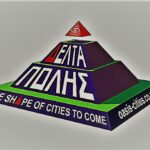“The Venus Project is not about new cities or new architecture, its about a new way of thinking”

[stextbox id=’info’]Jacque Fresco (1916-2017) was the founder and director of The Venus Project.[3] Fresco advocated global implementation of a socioeconomic system of social cooperation, technological automation, and scientific methodology within a radically different society, where ownership of material possessions is unnecessary. His city designs are aimed to improve daily life and improve the standard of living for everyone through a world wide system of resource control based on a science approach. The Venus Project proposes a feasible plan of action for social change, one that works towards a peaceful and sustainable global civilization. It outlines an alternative to strive toward where human rights are no longer paper proclamations but a way of life.
What is The Venus Project?
We propose a fresh, holistic approach – one that is dedicated to human and environmental concerns. It is an attainable vision of a bright and better future, one that is appropriate to the times in which we live, and both practical and feasible for a positive future for all the world’s people. We advocate an alternative vision unlike any social system that has gone before. Our conclusions are based on years of study and experimental research by many people from various scientific disciplines. We call for a straightforward approach to the redesign of a culture, in which the age-old inadequacies of war, poverty, hunger, debt, environmental degradation and unnecessary human suffering are viewed not only as avoidable, but totally unacceptable.
The Venus Project is a veritable blueprint for the genesis of a new world civilization, one that is based on human concern and environmental reclamation. One fundamental premise is that we work towards having all of the Earth’s resources as the common heritage of all the world’s people. Anything less will simply result in a continuation of the same catalog of problems inherent in the present system.
Experience tells us that human behavior can be directed, either toward constructive or destructive activity. This is what The Venus Project is all about – directing our technology and resources toward the positive, for the maximum benefit of people and planet, and seeking out new ways of thinking and living that emphasize and celebrate the vast potential of the human spirit. We have the tools at hand to design and build a future that is worthy of the human potential.
The Venus Project presents a bold, new direction for humanity that entails nothing less than the total redesign of our culture. Our proposition is not an attempt to predict what will be done, only what could be done. The responsibility for our future is in our hands, and depends on the decisions that we make today. The greatest resource that is available today is our own ingenuity.
“a radically different society, where ownership of material possessions is unnecessary”
“a peaceful and sustainable global civilization”
“where human rights are no longer paper proclamations but a way of life”.
“A world wide system of resource control based on a science approach”
This all screams of leftist globalist border-less gobble-de-gook..! Fresco comes across sounding like the leader of a quasi-religious cult, like Scientology.
[stextbox id=’info’] The Venus Project is so fuzzy-minded, so over-idealistic and so unrealistic on so many levels that its hard to know where to begin with a critique. So I’ll just focus on this single silly statement – “having all the earth’s resources as the common heritage of all the worlds people” sounds totally Marxist but even more naive. How would one get Saudi Arabia, for example, to share all its oil wealth? Or Russia to share all its mineral resources? Or the US to share all its food production?



[stextbox id=’info’ caption=’BASED ON ATLANTIS ‘]The concentric city model may look esthetically appealing, but how do you add to or augment such a city, except by adding more and ever wider circles..? Such a design would only be viable on a broad flat plain. What if there are hills or slopes or other obstacles in the way? It really makes no practical sense.
Unlike a modular concept such as Oasis-Cities, which could be easily augmented by adding additional modules, the concentric-city model requires a wide flat plain and any expansion is only possible by additional ever-larger circles – so the design becomes progressively more unwieldy.
